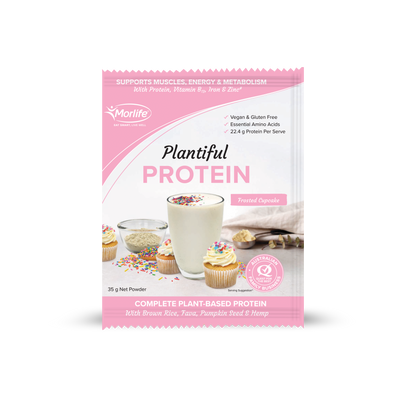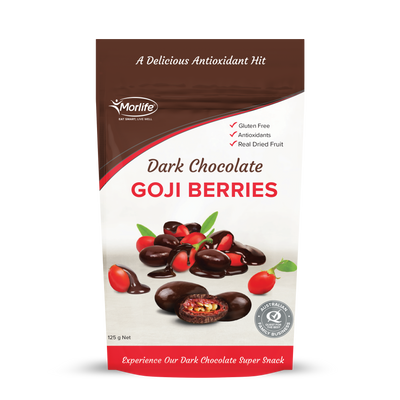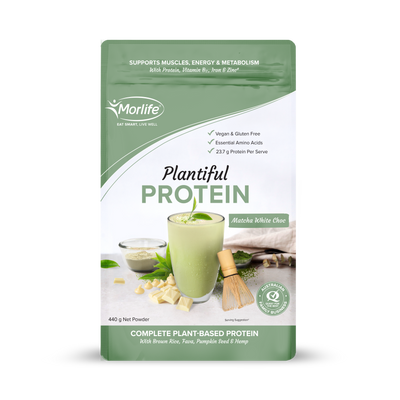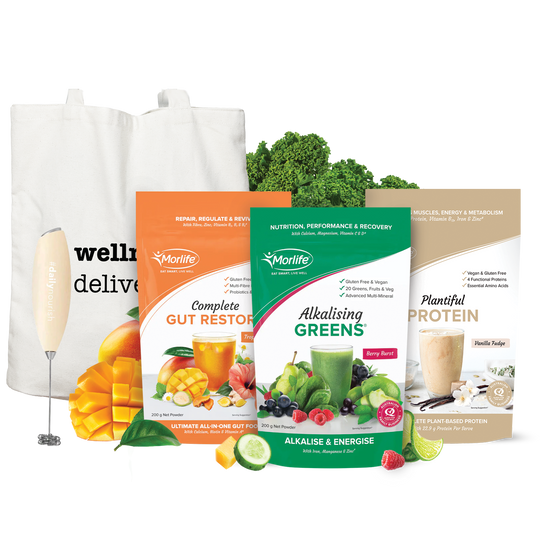How to Take the Fear Out of Reading Food Labels

Have you ever stumbled across a delicious new cereal, yoghurt or hummus flavour (spinach and feta amiright?!) then gone to look at the label and had a tantrum equivalent to a tot in his terrible twos just because of how confusing it is? Numbers that look like nuclear launch codes and percentages that exceed 100 (like how??)… it can all seem like a completely foreign language trying to navigate them - and not an easy, nice sounding language at that, I’m talking 18th century latin difficult. Well, we are here to tell you it doesn’t have to be as scary as it all might seem. There are a few tips and tricks to make label reading phobias a thing of the past and we’re going to lay them on you right now so strap yourself in because there’s going to be a whole lotta stress-saving info coming your way.
Nutritional Panels
Without wasting any time, let’s go straight to the top and talk about the star of every label - the nutrition panel. The nutrition panel can be a bit of a landmine with some information being as clear as day and other bits… not so much. But really, all a nutrition panel is telling us – in plain English, hopefully – is the amount of energy [kilojoules] (or calories if you’re from the states) the food is providing, how many grams of macronutrients it contains [i.e. carbs] and, in some cases where they are specifically measured, how many microminerals or macrominerals it may contain [i.e. Calcium or Iron]. These parametres are then further broken down into per 100g and per serve. This is important because like all of us, we’re sure you’ve grabbed that block of lush 75% dark choc and read “serves 10” like hmmm, challenge accepted *proceeds to eat whole block in its entirety*. I mean, these serving sizes are clearly written for maybe 0.0001% of the population with some kind of self-control, right? Well, actually wrong… a company will try to base the serving size to reflect what they believe the kilojoule load of the product should be per serve.
So if you’re watching your waistline and kilojoules are a concern, a good rule of thumb is to check the PER SERVE column and not the PER 100g column and instead try dividing your product by the suggested amount of serves (listed as grams too) and this might give you a more accurate picture of how many kilojoules you’re actually consuming – now that can be scary.
BUT we definitely don’t want to freak you out and “serving sizes” aren’t the end of the world, they will actually give you good insight into where manufacturers may be slightly misleading by presenting big packaging (like those massive potato chip bags that are literally just half air, grrr) while containing only 1.25 serves.
Where the aforementioned rule can be reversed in your favour is by checking your intake of nutrients that aren’t really nutritive at all. We’re going to use that sickening white stuff as an example... sugar. If you’re consciously trying to cut down on a nutrient, the PER 100G side of the panel is going to be your BFF! Basically if you can imagine that the per 100G is actually 100%, the nutrients listed below should equate to percentages of the product’s makeup. THEREFORE when trying to cut down on your sugar intake, it’s a good idea to limit foods that are made up of more than 10 grams or 10% sugar over all. To help you, we've broken down our Choc Delight Plantiful Protein nutritional panel so you can clearly see the different components.
Nutrient Reference Values
Now let’s talk RDI’s or, in English, Recommended Daily Intakes. These are also found on your nutrition panel or could even be present as a claim on the front of the label. You’ll know what we’re talking about when you see your milk stating “HALF YOUR DAILY CALCIUM IN ONE CUP”. These simply indicate how much of the recommended daily amount you are consuming as set by the National Health and Medical Research Council (in Australia). However, be aware that the RDI is only a recommended dietary intake so no need to freak out if you go over or under – some products might even completely fulfil your daily intake. Either way, it is a nifty tool to monitor how much of what you’re getting if you have any health or deficiency concerns.
Health Stars
Health stars refer to the star rating most supermarket foods are now labelled with. This nutrition reference is somewhat confusing because it is all subjective to what the governing body decided equates to healthy... not the individual but that’s another can of worms. BUT what you can do is utilise it to your advantage by using it to compare your chosen food to other foods in the same category to make your life just that little bit easier because we know that indecision is what leads most of us into purchasing whatever is most aesthetically pleasing. So next time you pick up those crackers, before heading on over to the checkout make sure you compare the star rating to the others surrounding it which will then maybe prompt you to check out the ingredients.
Ingredients
Ingredients lists may seem pretty straight forward; it's just a list of what's in your food right? Actually no, an ingredients list will tell you oh so much more than that. Did you know that the first listed ingredient is the most concentrated one? So if that’s sugar, you know you’ve got an issue. Ingredients are listed in descending order of how much of each ingredient is in the product. For example, if the ingredients list read: Flour, Sugar, Milk Solids then you would know that flour is the most abundant ingredient in the product, followed by sugar, then by milk solids.
Secondly, did you know that food additives (despite often being listed as numbers) don't necessarily always relate to one substance alone i.e. perhaps it states 'green colouring' but what exactly is "green colouring" made of? It could potentially be a multitude of things so it’s definitely important to note, especially for those with food additive sensitivity.
Lastly, percentages SHOULD be listed next to ingredients that are characteristic of the product. For example; if the food was a lemon meringue pie (old school, right?), it should list the lemon in the ingredients list with a percentage next to it. Though manufacturers often don't worry about doing this if less than 5% of the ingredient is present. So if there's no percentage, and you want your pie to be lemony, you should definitely be calling up whoever made it to refund you an equivalent of at least your money’s worth in lemons.
Food labelling is at first, a scary thing to approach but, with a little practice, you'll get the hang of it! Hopefully now you’re feeling ready to phase out that phobia and make this a new healthy habit.
Want more healthy tips? Read how to Meal Prep Like a Boss here.
Photo by Dainis Graveris via Unsplash











